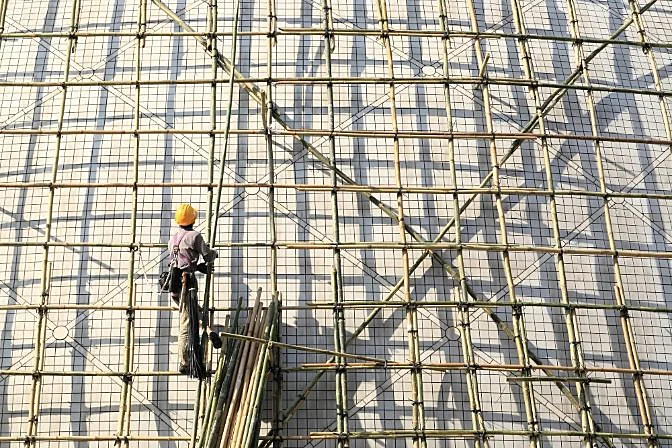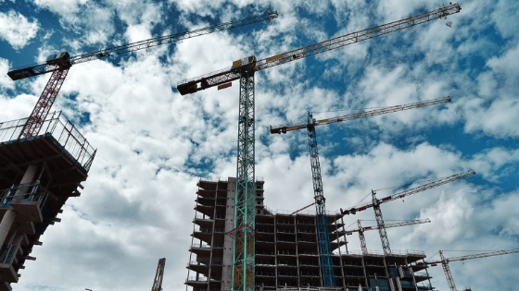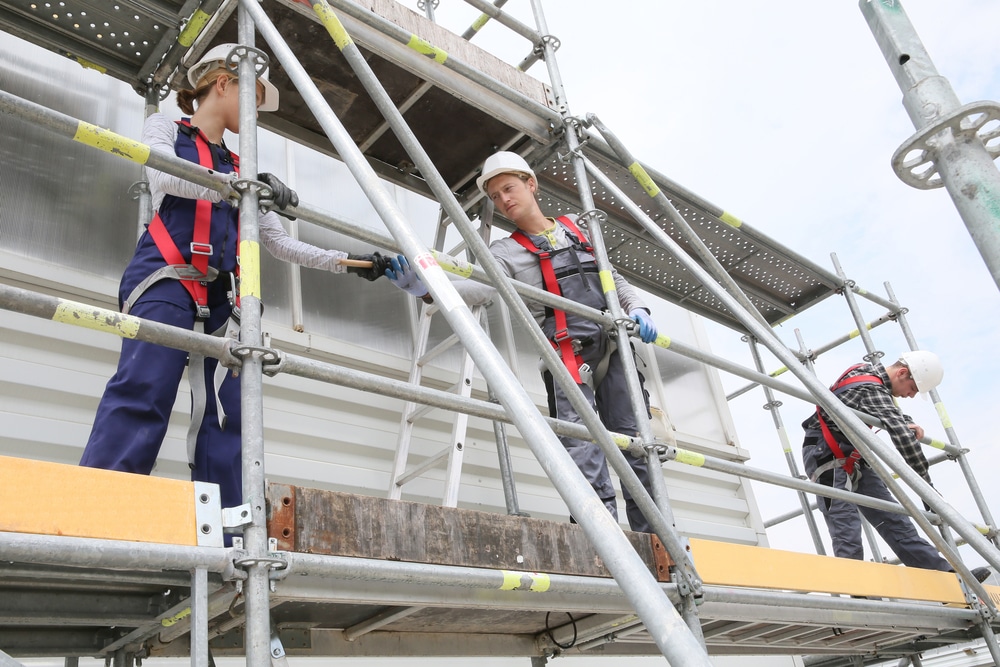Professional Scaffolder Surrey: Your Trusted Partner for Safe Installations
Professional Scaffolder Surrey: Your Trusted Partner for Safe Installations
Blog Article
Checking Out the Various Kinds of Scaffolding Made Use Of in Construction Projects
The construction market counts greatly on different types of scaffolding to meet specific project requirements, each offering distinctive advantages and applications. Standard structure scaffolding offers a strong structure for basic jobs, while suspended scaffolding is important for service high-rise structures. Various other options, such as system and rolling scaffolding, deal with performance and movement, respectively. Additionally, the cantilever alternative confirms invaluable in metropolitan settings where room is constrained. Recognizing the subtleties of these scaffolding kinds is essential for enhancing safety and performance on building and construction websites, triggering a closer evaluation of their special qualities and applications.

Typical Frame Scaffolding
Standard structure scaffolding is just one of one of the most extensively utilized techniques in the building market as a result of its robustness and flexibility. This system contains vertical and horizontal frameworks that are constructed to create a secure system for employees and materials. The primary components consist of upright blog posts, horizontal journals, and angled dental braces, which together offer a solid structure that can sustain substantial tons.
Among the essential advantages of standard framework scaffolding is its flexibility to different building and construction tasks, varying from domestic structures to big commercial structures. The modular design allows for very easy assembly and disassembly, making it reliable for both lasting and short-term projects. Furthermore, the system can be tailored in elevation and size, accommodating various building styles and website conditions.
Security is paramount in scaffolding applications, and standard frame systems are furnished with guardrails and toe boards to prevent falls and make sure employee security. Normal assessments and adherence to security laws are vital in preserving the honesty of the scaffold (Scaffolding). On the whole, typical framework scaffolding continues to be an essential choice in the building industry, providing a trusted system for labor and improving general task efficiency

Suspended Scaffolding
Put on hold scaffolding uses a special option for building tasks that require access to elevated surfaces, especially in circumstances where conventional frame scaffolding may be not practical. This kind of scaffolding is commonly put on hold from the roof or top degrees of a framework, utilizing a system of ropes, platforms, and pulley-blocks to create a functioning room that can be readjusted to numerous heights.
One of the main advantages of put on hold scaffolding is its adaptability. It can be quickly rearranged or reduced to fit changes in building needs, making it suitable for tasks such as home window installation, façade work, and maintenance on skyscraper structures. Furthermore, the very little footprint of put on hold scaffolding enables much better usage of ground area in metropolitan atmospheres, where space is often restricted.
Safety and security is a critical consideration in using put on hold scaffolding. Appropriate rigging and anchoring systems must be utilized to make sure stability and prevent accidents. Operators should additionally be trained in the safe use this equipment. In general, suspended scaffolding gives a efficient and reliable option for accessing hard-to-reach locations in different construction circumstances, enhancing both efficiency and safety and security on site.
System Scaffolding
System scaffolding, commonly considered as a modern remedy in the scaffolding scaffolder man sector, contains pre-engineered components that can be swiftly set up and adapted for numerous building jobs. Scaffolding. This kind of scaffolding is identified by its modular layout, which allows for adaptability and efficiency on task websites, suiting different heights and architectural demands
Typically made from high-strength steel or aluminum, system scaffolding provides improved toughness and stability. The elements include vertical articles, straight ledgers, and angled dental braces, which adjoin securely, ensuring a durable structure. The layout frequently includes standardized installations, simplifying setting up and disassembly processes, thereby reducing labor time and prices.

Rolling Scaffolding
Moving scaffolding is a versatile option to typical fixed scaffolding, created for flexibility and convenience of usage on building and construction websites. This sort of scaffolding includes a system sustained by structures with wheels, allowing workers to conveniently move it as required. The wheelchair attribute considerably improves efficiency, as it reduces downtime related to setting up and taking apart repaired scaffolding.
Usually constructed from light-weight materials such as aluminum or steel, rolling scaffolding offers a tough yet mobile solution for jobs needing regular repositioning - Scaffolding. It is specifically beneficial in jobs such as paint, drywall installation, and electric work, where access to different heights and places is required
Safety is extremely important in rolling scaffolding style, with attributes such as locking wheels to avoid unexpected movement when in use, and guardrails to protect workers from falls. Additionally, many versions are flexible in height, accommodating numerous job demands.
Cantilever Scaffolding

The style of cantilever scaffolding generally includes utilizing brackets or arms secured to a building or framework, allowing the platform to extend outward safely. Security is paramount; thus, these scaffolds have to be crafted to stand up to different loads and environmental problems. Regular evaluation and upkeep are necessary to make sure architectural integrity and worker safety and security.
Cantilever scaffolding is favored for its versatility and efficient use of room, making it a preferred option in metropolitan settings where area constraints prevail. Moreover, it promotes simpler accessibility to high altitudes, inevitably contributing to the total efficiency of building tasks. Similar to all scaffolding types, appropriate training and adherence to safety standards are critical for employees making use of cantilever scaffolding.
Final Thought
To conclude, the diverse kinds of scaffolding made use of in construction projects each serve unique objectives tailored to certain site needs. Conventional framework scaffolding gives stability, while put on hold scaffolding uses convenience for elevated jobs. System scaffolding promotes fast setting up, and rolling scaffolding enhances mobility for differing work settings. Cantilever scaffolding properly deals with challenges in metropolitan settings. Comprehending these scaffolding types is crucial for maximizing safety and efficiency in building, inevitably adding to the effective conclusion of jobs.
Typical frame scaffolding supplies a sturdy structure for general jobs, while put on hold scaffolding is necessary for job on skyscraper frameworks.Moving scaffolding is a flexible choice to conventional fixed scaffolding, made for flexibility and ease of usage on construction websites. As with all scaffolding kinds, correct training and adherence to security requirements are critical for employees utilizing cantilever scaffolding.
Traditional framework scaffolding gives stability, while put on hold scaffolding offers flexibility for elevated jobs. System scaffolding helps with fast setting up, and rolling scaffolding enhances wheelchair for differing job atmospheres.
Report this page